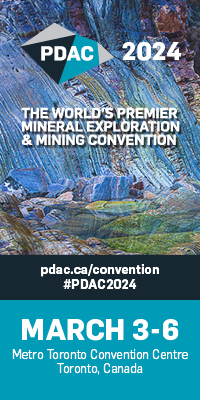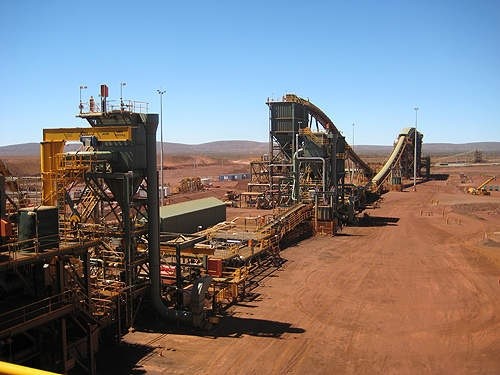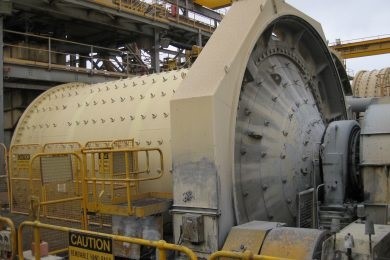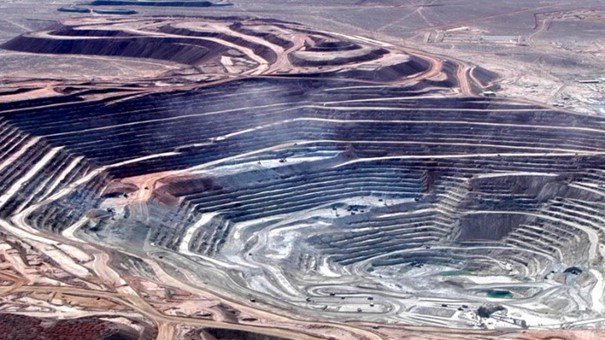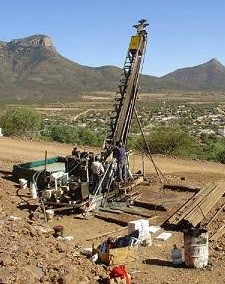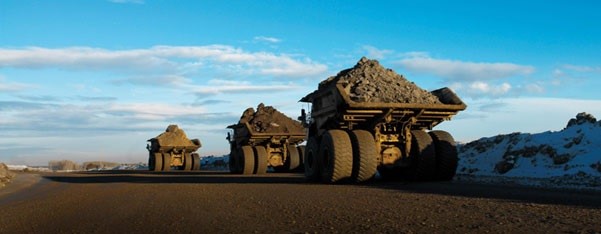Avrupa Minerals Further Extends Massive Sulfide Mineralization At Sesmarias; Jv Partner Matsa Taken Over By Sandfire Resources

Drilling at Sesmarias; Alvalade Project
Although Avrupa Minerals (TSXV:AVU) and JV partner MATSA are progressing slowly but surely at the Sesmarias target, part of their flagship Alvalade project in Portugal, Avrupa recently announced drill intercepts like 36.45m @0.72% Cu and 39.2m @0.44% Cu with lots of byproducts show they are on the right track. Fortunately, a second rig is planned to be deployed soon, so more assays can be expected to be announced in the same time frame. On an important sidenote: MATSA is in the midst of being taken over by Sandfire Resources for a staggering US$1.87B (insiders valued MATSA at US$1-1.2B) which requires an equity raise larger than its own market cap, so it remains to be seen if this could have consequences for the JV.
Since the geology of the targeted 8 Lens at Sesmarias appears to be complex and folded, management is drilling several fences in order to carefully map geologic structures, before being able to step out much further, where more significant mineralization is expected. In this article CEO Paul Kuhn will elaborate further on the exploration strategy.
All presented tables are my own material, unless stated otherwise.
All pictures are company material, unless stated otherwise.
All currencies are in US Dollars, unless stated otherwise.
After a news break of almost 4 months, Avrupa Minerals announced four more drill results on their Sesmarias target, part of the Alvalade project in Portugal. To date, the company has completed 5,862m of drilling, consisting of 11 holes on 6 different fences, and is drilling a 12th hole (SES21-042) now, testing potential massive sulfide mineralization on Section 350S. The assays of 10 holes (SES20-031 to SES21-040) have been reported now, and the results of the 11th hole (SES21-041) are pending.
Here are the highlights of the latest results:
- - SES21-039: 39.2 meters @ 0.44% Cu, 0.71 g/t Au, 27.1 g/t Ag, 2.07% Zn,
and 0.79% Pb from 348m, with a second intercept at greater depth of:
14.8m @ 0.45%Cu, 0.29 g/t Au and 28.7 g/t Ag from 419m.
- - SES21-040: 36.45 meters @ 0.72% Cu, 0.36 g/t Au, 21 g/t Ag, and 0.82%
Pb from 479.4m , including:
- 11.0 meters @ 1.05% Cu, 0.51 g/t Au, 39.2 g/t Ag, and 1.64% Pb.
These are strong intercepts, SES21-039 is even the best to date. Holes SES21-037 and SES21-038 were less impressive, as they returned much shorter intercepts of 3.9m @ 0.28% Cu, 0.48g/t Au, 24.4g/t Ag, 1.7% Zn and 0.77% Pb from 476.85m 037, and in 038, 6m @ 0.72%Cu, 0.6g/t Au, 33.1g/t Ag, 1.57% Zn and 0.98% Pb from 356.85m and a deeper intercept of 2.8m @ 0.75% Cu from 376.35m.
CEO Paul Kuhn told me earlier he doesn’t like to report copper equivalents as MATSA is looking for 1% or better copper grades, and he considers it to be window dressing, as polymetallic recoveries are usually much lower (50-70%) than pure copper recoveries (85-90%). But with these substantial by-products which increase the copper grade significantly, it would be a waste to not calculate copper equivalent grades. This means SES21-039 returned one intercept of 39.2m @ 1.49% CuEq at today’s metal prices, and another deeper intercept of 14.8m @0.85% CuEq, and SES21-040 resulted in 36.45m @ 1.29% CuEq. Although the depth of the 8 Lens at Sesmarias is significant, this can very well result in economic mineralization.
An overview of the drilling at the 8 Lens at Sesmarias can be seen below, with the various fences drawn in colored rectangles, which also outline corresponding sections. SES21-039 has been drilled in section 120S, and SES21-040 in section 350S:

This map makes me wonder what would be in between sections 120S and 350S, and I asked CEO Kuhn if they had plans to do infill drilling here. He answered, “We expect to do some infill between 120 S and 350 S, but we need to see what the results are for SES21-042 (above 040) and SES21-043 (below 040). As we are seeing improvement of the metal content towards the south, we may be more inclined to first step out in that direction for our next fence. We are closing in on the Central (discovery) sector, where SES002/003 had copper grades closer to 2%.”
The following section shows the very complexly folded mineralization of Lens 8, discovered by MATSA and Avrupa geologists. As the folding is so complex, the geologists thought it was best to advance by small step outs of 50m along strike:

The unfortunate issue is, that the geologists haven’t hit the large pink target zones of possible/potential mineralization yet, and have to draw these conceptually more to the right with each follow-up hole drilled. Let’s hope they hit these 100-200m intercepts of 0.8-1% Cu soon. On a sidenote, I wondered (as a non-geologist who likes to ask all sorts of questions) if it is possible to use directional drilling at depth, to lower costs and aim quicker for deeper targets, for example using hole SES21-037. CEO Kuhn replied, “It is not an issue of directional drilling, but one of depth to target versus extending the mineralization along strike and a short ways down dip. In order to ensure that MATSA continues after the 51% earn-in, we are drilling the higher percentage targets first, the ones that have a better chance of hitting significant massive sulfide mineralization, the ones that have real meaning to MATSA. The pink target areas will still be there for MATSA to drill as they move towards the next earn-in level.”
This last part made me wonder if MATSA doesn’t want to investigate those pink targets asap before continuing with the JV, as these represent really significant massive sulfide mineralization. Kuhn answered:
“The general thinking is to get strike length and depth, not just one or the other. We are also both a little conservative, MATSA from a practical, large company angle, and Avrupa from the angle of we have to hit something good at a reasonable depth before we take on the challenge of the deeper targets. Because the folding is so complicated, we don’t want to risk drilling BELOW the fold and hitting nothing. We have done that several times already above the folds. Evidence 031, 034, and 035, though 035 was getting close to the top of the fold.“
Holes like SES21-40 for sure already look more promising:
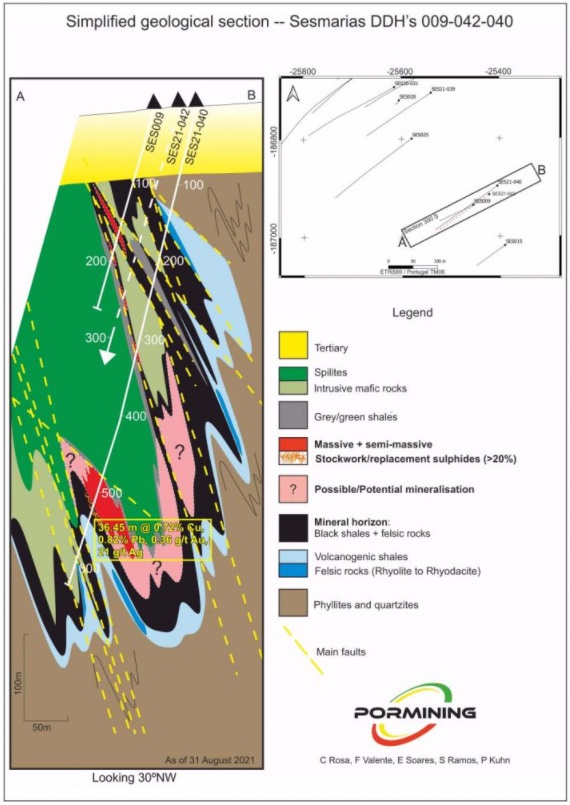
What I didn’t really understand was why the currently drilled hole SES21-042 (see dashed line in section above, in between SES009 and SES21-040) wasn’t designed at the right side of SES21-040, as the potential mineralization has been planned there. CEO Kuhn answered, “The geology of the folds predicated an earlier answer as to where the top of the fold, and thus the massive sulfide body, might be. The next hole is planned to target the downdip potential and will be collared approximately 40 meters to the right side (northeast) of SES21-040.”
As I still didn’t quite follow this strategy, as a small top fold intercept seems low risk but also low value as it would just indicate the limit to that side, I asked Paul for more explanation. This is what he answered:
“We know there is a limit to the top of the fold, dependent on faults or presence of Tertiary sands and gravels. Hitting the top of the fold gives us a nice massive sulfide intercept at a shallow depth. Remember, the bottoms of the folds are all speculative. As the risk level is very high, we are more inclined to take baby steps at first. Clearly there is potential below (to the right) on all of our sections, even where SES21-037 fails to get a big intercept. If we had infinite funding, we would be doing “all of the above”. If the holes were shallower, we would be doing more locations and more strike length and down dip additions. We have already drilled several “dry holes” and we do need to limit that in this phase, even if we understand (AFTER the fact) why there is a dry hole.”
As can be seen, folded structures like this can only be described properly by strings of closely spaced drill holes, mapping stratigraphy and mineralization in a detailed fashion. Since mineralization could be located at significant depth in this case, deep drilling is also necessary. Keep in mind the nearby historic Lousal Mine which mined 20Mt and is estimated to contain another 30Mt of massive sulfide mineralization, has a similar mineralized envelope consisting predominantly of massive sulfides hosted by the black shales, and this is what Avrupa and MATSA are looking for at Sesmarias.
CEO Kuhn elaborated some more on the folded structure and the resemblance with Lousal:
“Through detailed logging of the new core from this phase of drilling, as well as detailed re-logging of all the Sesmarias area historic core, we have established that the Sesmarias massive sulfide system is heavily folded and strongly modified by several phases of post-mineralization faulting. This geometry explains the historic situation of the numerous massive sulfide lenses that make up the Lousal deposit, just seven kilometers north of Sesmarias. We expect a similar targeting story for Monte da Bela Vista, a further two kilometers beyond Lousal, as the complicated geology in all three target areas appears to be similar, if not directly related.”
The company is also re-mapping the Monte da Bela Vista target area, completed a mapping and rock chip sampling program, and relogged historic core holes, in order to define further drill targets. Besides this, the company also completed a 380-sample soil program, showing strong anomalies. The combination of results from the VTEM survey, recent mapping and sampling, relogging, and an enhanced understanding of the structure and geology, suggests a new, buried and relatively untouched target zone, immediately adjacent to the southwest of the exposed Volcano Sedimentary (VS) mineral horizon rocks, and directly on trend with massive sulfides at the Lousal Mine.
The red and magenta dots in the maps below indicate high value copper in soil sample results.

I zoomed in some more on the map on the right:

It can be seen that the mineralized trend stretches out over more than 20km, and there are multiple targets to follow upon. Something of interest in these cases is always to find out to what degree sampling, VTEMs, mapping, etc. relates to actual mineralization if there is the luxury of having any. In this case Avrupa has the historic Lousal and Caveira Mines, both of which are assumed to have massive sulfide mineralization remaining in situ.

Caveira Mine
CEO Kuhn had this to say about this subject:
“Our ongoing work north of the Lousal Mine indicates that there is a string of drillable target areas highlighted by geology, historic sampling, and the recent VTEM survey. We anticipate the arrival of a second drill rig to get started on these anomalies while the first rig continues to drill in the Sesmarias area.”
Also of importance in the map above is the white polygon near Brejo, which represents a small village, which could cause permitting issues as it seems located exactly on the mineralized trend. According to Kuhn, “At the moment we are not working close to the village and do not anticipate any issues in the near future. We do work closely with all of the landowners in our immediate target areas, hire and purchase locally, and take real care to clean up our working areas to the approval of the landowner, and to existing regulations. When we get to the Brejo area, the places we anticipate drilling are not particularly close to the village, nor really within sight.”

Lousal Mine
As you might know from earlier articles, I keep circling back to this former Lousal Mine, as I consider their historic resource base of an estimated 30Mt low hanging fruit. And not only that, as the geological makeup of the entire 20km trend seems to be quite similar, a solid analysis of Lousal could provide a wealth of knowledge for exploration strategies. Kuhn shared last time they started working on the Lousal data, being a complicated digital re-construction, and incredibly important to be as precise as possible as to the location of all the old workings. I wondered how far they are with this reconstruction. He answered that the re-construction project is just getting underway and we expect it to be completed before the end of the year.
In the last update Kuhn disclosed to me MATSA was budget-constrained (and available rig-constrained) with regards to deploying a second drill rig. Because the project now has enough targets between Caveira and Lousal to employ a second rig, and because a rig has become available, the company expects to see a second rig in the very near future, perhaps within 7-10 days, depending on mobilization and landowner authorization of particular drillsites. Kuhn expects Sandfire to honor the JV budgets, as Sandfire is keen on doing exploration.
Conclusion
Avrupa Minerals announced pretty decent drill results at Sesmarias, and is busy delineating a potentially significant mineralized envelope. Because of the complex, folded geology at 400m+ depth, this is a slow process. Fortunately, the JV is about to deploy a second drill rig soon, which will likely generate more drill results altogether in the same time period. The latest assays seem to approach the desired targets of mineralization closer and closer, so it only seems a matter of time and more drilling. The company is planning to continue drilling at Sesmarias, and if Avrupa manages to hit the estimated copper intercepts of 1% and 100m long, my expectations for a re-rating of the share price are high, at current metal prices. Let’s see how things pan out.
I hope you will find this article interesting and useful, and will have further interest in my upcoming articles on mining. To never miss a thing, please subscribe to my free newsletter on my website www.criticalinvestor.eu, in order to get an email notice of my new articles soon after they are published.
Disclaimer:
The author is not a registered investment advisor, and currently has a long position in this stock. Avrupa Minerals is a sponsoring company. All facts are to be checked by the reader. For more information go to www.avrupaminerals.com and read the company’s profile and official documents on www.sedar.com, also for important risk disclosures. This article is provided for information purposes only, and is not intended to be investment advice of any kind, and all readers are encouraged to do their own due diligence, and talk to their own licensed investment advisors prior to making any investment decisions.

This newsletter/article is not meant to be investment advice, as Criticalinvestor.eu (from now on website, newsletter, and all persons or organisations directly related to it, for example but not limited to: owner, editor, the Seekingalpha author The Critical Investor, publisher, host company, employees, associates, sponsoring companies) is no registered investment advisor. Therefore it is not intended to meet your specific individual investment needs and it is not tailored to your personal financial situation. This newsletter/article reflects the personal and therefore subjective views and opinions of Criticalinvestor.eu and nothing else. The information herein may not be complete, up to date or correct. This newsletter/article is provided in good faith but without any legal responsibility or obligation to provide future updates.
Through use of this website and its newsletter viewing or using you agree to hold Criticalinvestor.eu harmless and to completely release them from any and all liability due to any and all loss (monetary or otherwise), damage (monetary or otherwise), or injury (monetary or otherwise) that you may incur.
You understand that Criticalinvestor.eu could be an investor and/or active trader, meaning that Criticalinvestor.eu could buy and sell certain securities at all times, more specific any or all of the stocks mentioned in own newsletters/articles and other own content like the Watchlist, Leveraged List, etc.
No part of this newsletter/article may be reproduced, copied, emailed, faxed, or distributed (in any form) without the express written permission of Criticalinvestor.eu. Everything contained herein is subject to international copyright protection. The full disclaimer can be found here.



